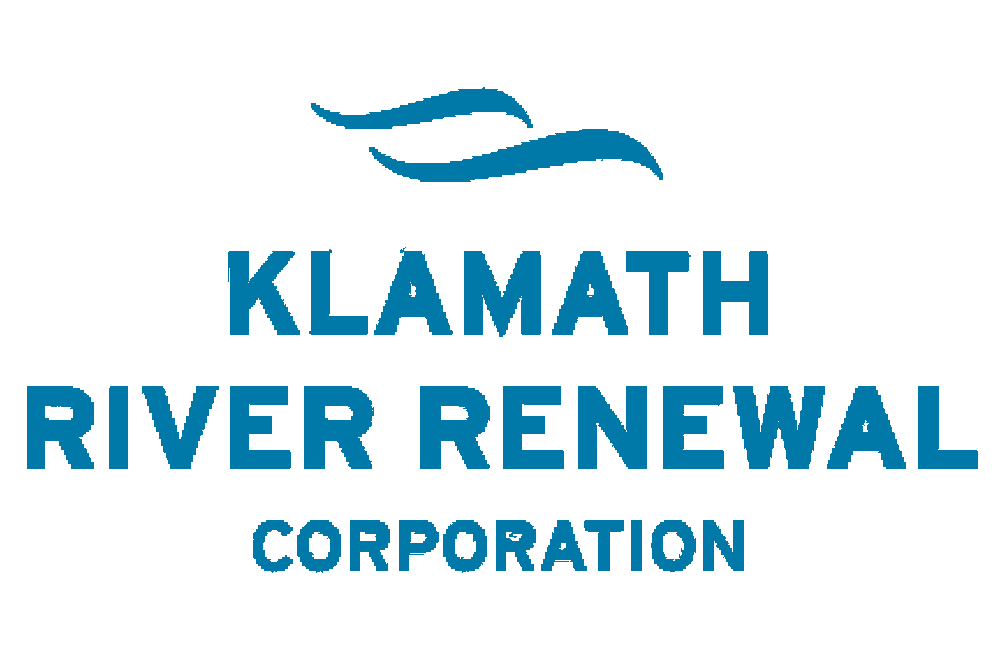FOR IMMEDIATE RELEASE
July 29, 2019
CONTACT: Matt Cox, KRRC
(916) 847-6459 (cell)
matt@klamathrenewal.org
KLAMATH BASIN – Today, in a filing to the Federal Energy Regulatory Commission (FERC), the Klamath River Renewal Corporation (KRRC) answered important, substantive questions FERC asked to evaluate KRRC’s capacity to become licensee for the Lower Klamath Project (Project) and remove the four dams on the Klamath River. This submission to FERC is another concrete step toward fulfilling the terms of the Amended Klamath Hydroelectric Settlement Agreement (KHSA), removing the dams and restoring a free-flowing Klamath River.
“This is a project of vast importance for the environment, the river, and the people and communities in the Klamath Basin,” said Mark Bransom, KRRC Chief Executive Officer. “Our submission to FERC today proves that we understand the magnitude of our charge and are on the right path. We have the funding, the team, the expertise and the plan to do it right and pen a vibrant new chapter of Klamath River history. We want to particularly underscore the years of effort by tribal communities who truly laid the foundation for where we are today.”
In 2016, KRRC submitted license transfer and surrender applications to FERC, both of which are necessary for KRRC to take ownership of the four lower Klamath dams, remove them, and restore the river. In 2018, KRRC submitted to FERC its “Definite Plan,” a comprehensive, 2,800-page document that covered every aspect of its proposal, including plans for facilities removal, site remediation and restoration, estimated cost, and risk mitigation.
As part of the review process for KRRC’s Definite Plan, FERC directed KRRC to convene an independent Board of Consultants (BOC) to analyze KRRC’s work and provide feedback and suggestions. The BOC comprises experts in dam construction and removal, engineering, aquatic and terrestrial biology, construction cost estimating, insurance, and bonding for large infrastructure projects. BOCs are common for large projects in FERC’s purview.
In late December 2018, the BOC released its suggestions and questions regarding the Definite Plan to KRRC, and KRRC has spent the past seven months refining and strengthening aspects of the Definite Plan to reflect the BOC input, leading to today’s supplemental submission. The result is a compelling, comprehensive approach and proof of KRRC’s capacity for FERC to consider as it deliberates on license transfer and surrender.
Specifically, in the new filing, KRRC demonstrated that its committed funds are sufficient to complete dam removal as proposed in the license surrender application. This updated cost estimate reflects refinements to prior cost-estimate work completed by the federal Bureau of Reclamation, simulation of tens-of-thousands of scenarios that could affect costs, and incorporation of expert BOC input. The new, “P80” cost estimate for full dam removal is $434 million, well within KRRC’s $450 million budget. P80 is an industry standard for cost estimating that assumes 80-percent of a project’s identified risks will occur over the life of the project. The $434 million figure also includes significant contingency funding to provide a substantial buffer for any additional project costs.
In addition, KRRC has developed the most comprehensive risk management program ever considered by FERC for purposes of dam removal. The risk package includes insurance, performance bond, and indemnity coverages to offset potential short- and long-term project effects.
KRRC has also engaged a world-class, best-in-business team to ensure its capacity as licensee, including technical consultant AECOM, with a global track record of cost estimation of complex construction projects; Kiewit Infrastructure West, which possesses a history of successfully completing large and challenging water resources projects; risk management expert AON, which creates risk solutions across all industry sectors; and Resource Environmental Solutions, the nation’s leader in long-term environmental mitigation and management of associated liabilities.
“The KHSA represents years of negotiations, exhaustive scientific study, and compromise among the many groups who are all working together for a robust Klamath River and Basin,” said Bransom. “Healthy rivers breathe life into the communities they touch. Dam removal and a revitalized Klamath River will enhance resiliency to strengthen the entire Basin for the future.”
FERC will decide on the KRRC license transfer and surrender applications. KRRC anticipates beginning drawdown and removal as early as 2022, pending action by FERC and other regulators.
To view the KRRC filing, visit: https://klamathrenewal.org/definite-plan/
The Klamath River Renewal Corporation (KRRC) is an independent nonprofit organization founded in 2016 as part of the amended Klamath Hydroelectric Settlement Agreement (KHSA). KRRC is part of a cooperative effort to re-establish the natural vitality of the Klamath River so that it can support all communities in the basin. Signatories of the amended KHSA incude the states of California and Oregon, local governments, tribal nations, dam owner PacifiCorp, irrigators, and several conservation and fishing groups. KRRC was formed for the sole purpose of taking ownership of four PacifiCorps dams — J.C. Boyle, Copco No. 1 & 2, and Iron Gate – and then removing these dams, restoring formerly inundated lands, and implementing required mitigation measures in compliance with all applicable federal, state, and local regulations. KRRC’s work is funded by PacifiCorp customer surcharges and California Proposition 1 water bond funds.
KRRC values transparency and cooperation with all stakeholders and is committed to working with residents and governments to minimize any nuisance or negative impacts while enhancing the project’s local benefits.
